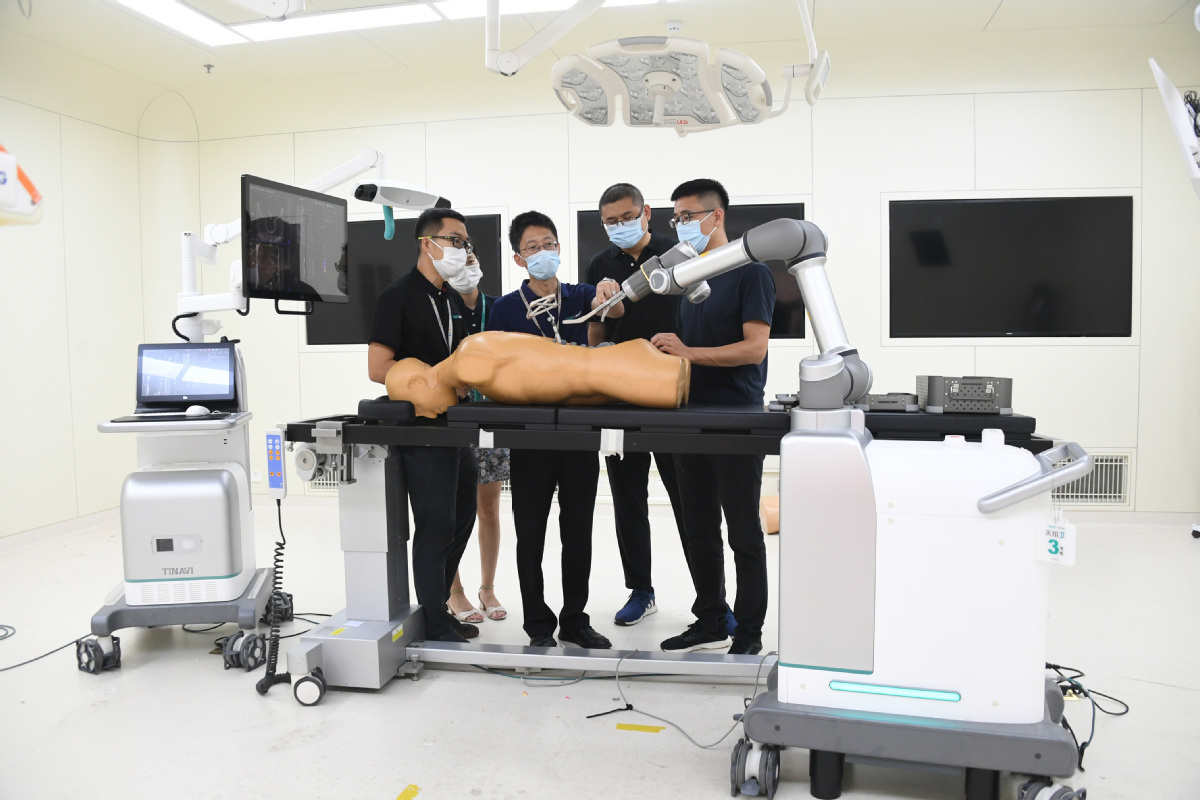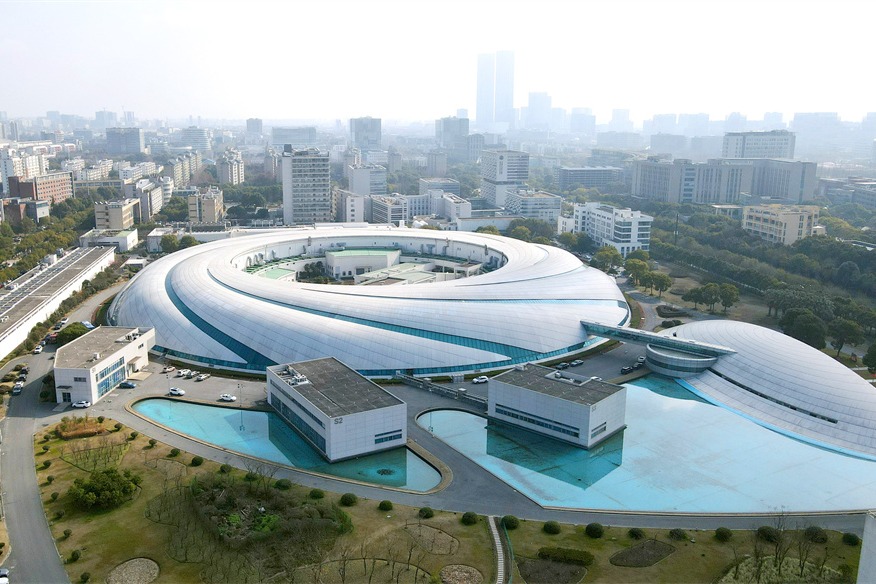5G tech enables comprehensive digital transformation


REMOTE SURGERY
In 2019, a surgeon at Shanghai-based Huashan Hospital performed an endoscopic surgery to remove the pituitary tumor in a patient's brain.
About 20 kilometers away, nearly 60 interns closely watched the operation, which was live-streamed on a 4K high-definition screen. Thanks to 5G wireless devices developed by Chinese telecom giant Huawei, such cutting-edge technology was possible.
It marked the launch of Shanghai's first 5G smart medicine pilot base. Surgical procedures in China are evolving due to the 5G network's low latency advantage.
On Jan 17 this year, surgeons at Huashan made an attempt to excise a basicranial tumor, bolstered by 5G mixed reality (MR) technology developed by a Shanghai-based startup.
Wearing VR headsets, they cut out target tissues precisely through a five-centimeter skin incision. The brain's enhanced 3D holographic images were projected in real-time upon the patient's scalp to indicate exact locations inside the brain.
Huashan's 5G+MR surgery was listed among the Top 10 cases at this year's World 5G Convention held in Harbin last week.
The 5G tech also supports remotely-controlled robotic operations. Medical workers from two hospitals in the eastern Chinese city of Nanjing and the westernmost prefecture of Kizilsu Kirghiz in the country's Xinjiang autonomous region collaborated to conduct a surgery for stone removal through a 5G-enabled robot.
Experienced surgeons in Nanjing used a long-distance ultrasound machine to give instructions on the precise place of the puncture while their counterparts 5,000 kilometers away operated accordingly to remove the stone.
During the operation, the average two-way 5G network latency was reduced to only 135 milliseconds, meaning the surgeons could communicate almost without any time delay.
As of Aug 1, the Kizilsu Kirghiz hospital had completed 22 stone removal robotic operations, making high-quality medical services more accessible to patients living in the country's remote areas.
DIGITAL FARM
Agriculture, commonly seen as a natural resource, has also been integrated with 5G technology.
At a rice paddy field in Northeast China's Heilongjiang province, a probe equipped with a 5G-enabled AI camera is used to realize leaf age diagnosis, disease identification, pest control and prevention of plant diseases.
Along lush crop rows, water-level sensors are installed to measure soil moisture and enable automatic irrigation.
"The 5G digital farm has improved tillage, making agriculture more manageable," said Meng Qi, a contractor of the smart farm.
"5G agricultural machinery, Internet of Things, artificial intelligence and other digital technologies are becoming the new tools for rural development," said Li Daoliang, director of the International College Beijing, China Agricultural University.




































